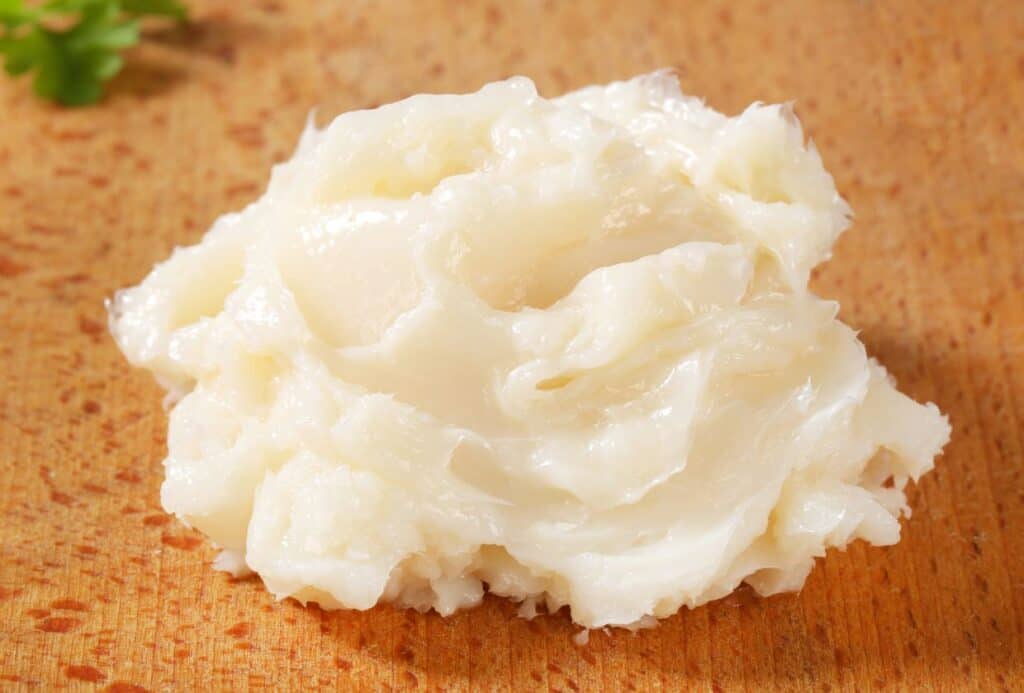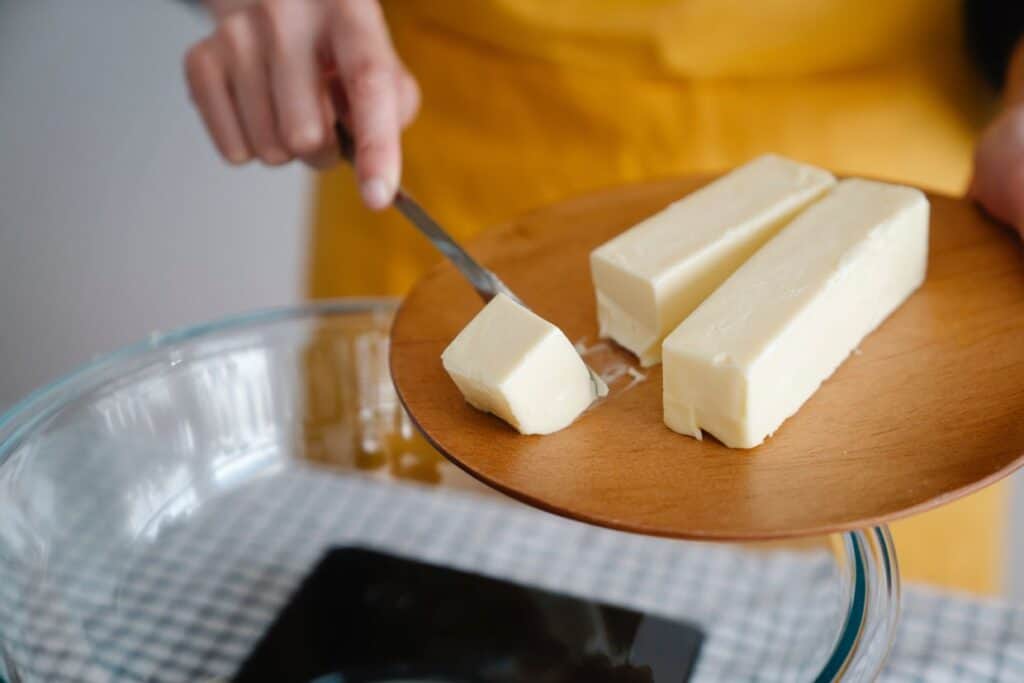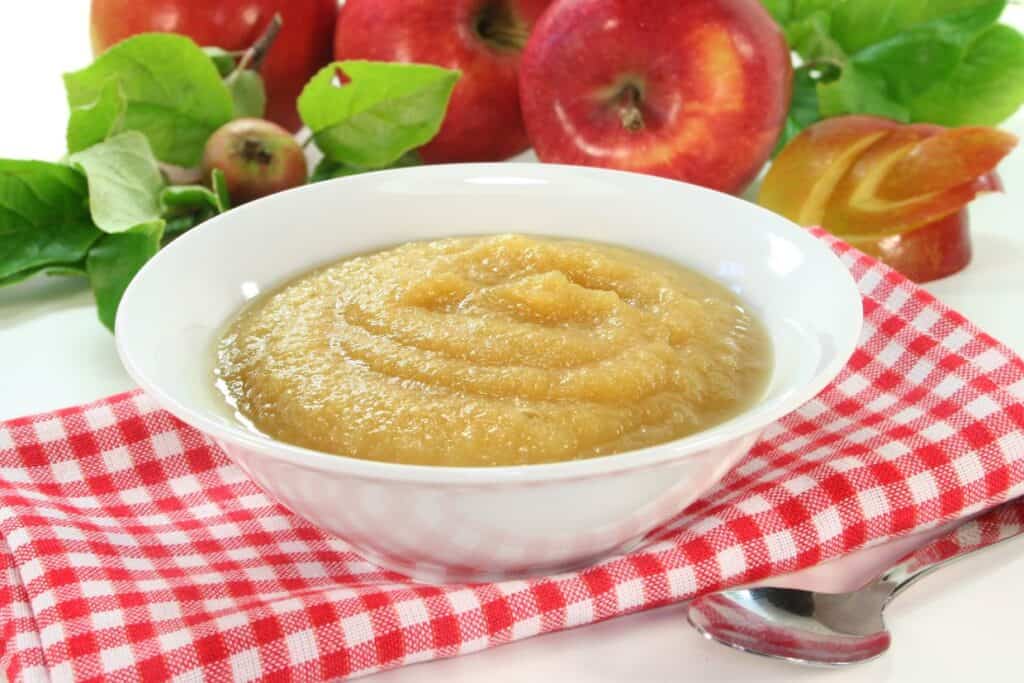Many recipes call for shortening, but how many people have it in their pantry? Instead of running to the store, try a shortening substitute.

Other people have dietary restrictions, are looking for healthier options or prefer more flavorful substitutes. If any of the above apply to you, you may be interested in learning more about what you can substitute for shortening.
Why shortening — and shortening substitutes — are necessary
Shortening gives certain qualities to baked goods. Here are some reasons why shortening is needed:
- It creates flakiness in pie crusts and pastries because of its ability to create layers when the fat particles melt during baking.
- Shortening has a neutral flavor so it doesn’t add a strong taste to the final product.
- It has a higher melting point than other fats so it helps baked goods, such as cookies and cakes, retain their moisture.
- Shortening coats the flour particles more effectively than butter, which makes the dough easier to handle and less likely to become tough.
Common shortening substitutes
Always remember that using a shortening substitute may change the texture, flavor or consistency of a recipe. Having the exact ingredient a recipe calls for is ideal, but it’s not always possible due to allergies, dietary restrictions or not having it on hand. In these cases, these options are great choices.
Butter

Butter is usually used because it has more flavor than shortening. It can be used as a one-for-one shortening substitute in biscuits, pie crusts, cookies and quick breads. Butter will change the texture of baked goods due to its higher moisture content. Shortening is 100 percent fat, while butter is about 80 percent fat and 20 percent moisture. The moisture comes from the dairy that butter is made from and activates the gluten in the flour, giving recipes a more bread-like texture.
Coconut oil
Coconut oil can be used as a one-for-one shortening substitute in baked goods where you won’t mind its distinct flavor. Add a flavorful twist to cookies, cakes or quick breads. Like shortening, coconut oil is 100 percent fat and solid at room temperature.
“I regularly used coconut oil in place of shortening in recipes when my child had a dairy allergy. It worked surprisingly well, and there are some recipes like lemon squares where I still prefer coconut oil because it works so well. You generally don’t taste coconut in the finished product, and it’s a great one-to-one substitute.”
— Michelle Price, Honest and Truly
FDL’S 75 Best Bites

Our cookbook with 75 tasty recipes will be your go-to kitchen companion for easy dinners with ad-free recipes right at your fingertips. Crafted by experienced chefs and recipe developers, this collection offers a treasure trove of tried-and-true dishes that make mealtime a breeze.
Get the Recipe: FDL’S 75 Best Bites
Vegetable oil
Vegetable oil can be used as a one-for-one substitute for shortening in recipes that call for melted shortening. It will not impact the taste as it has a neutral flavor like shortening. Vegetable oil is best for quick breads because the final product will be denser than normal. It doesn’t work well for biscuits or pie crusts.
Lard
Lard can be used as a one-for-one shortening substitute. It is 100% fat and stays solid at room temperature so it is the closest substitute to shortening. Lard is best for pie crusts and biscuits since it results in a similar short dough consistency to shortening.
“I’ve been using lard instead of shortening when making pastries and pie crusts. I find it gives a lighter and flakier texture.”
— Lisa MarcAurele, Little Bit Recipes
Margarine
Margarine has a lower fat content than shortening, but it can still be used as a substitute. To replace the shortening in your recipe, add 1 to 2 extra tablespoons of margarine to every cup you are substituting. This helps make up for the lower fat content. Margarine works best in pie crusts, muffins, cakes and more.
Vegan butter
Vegan butter is made from a variety of oils and can be used as a substitute for shortening. Like margarine, you will have to add 1 to 2 extra tablespoons of vegan butter to every cup you are substituting.
Ghee
Ghee can be used as a one-for-one shortening substitute. It is clarified butter, which means that the milk solids have been removed so it has less water than butter. Because it has less water, using ghee will result in baked goods with a similar texture to the original shortening recipe, but with a buttery flavor.
Bacon grease
Bacon grease works as a one-for-one substitute for shortening. After cooking bacon, pour the grease into a glass jar and let it cool. It has a strong smoky taste so it works best in savory recipes like biscuits, pot pie topping or cornbread. Bacon grease gives baked goods a soft crumbly texture. You may want to omit or reduce the salt in your recipe because of the natural saltiness in bacon.
Applesauce

Applesauce can be used as a replacement for shortening, but you only need half as much applesauce as shortening. If your recipe calls for 1 cup of shortening, you will only need a 1/2 cup of applesauce to replace it. Applesauce makes baked goods dense and adds moisture which results in a cakey texture. It works best in cookies, brownies, cupcakes and quick breads.
Avocado Puree
Avocado puree works as a one-for-one shortening substitute. It has a solid, creamy consistency like shortening and plenty of natural fat. Use a food processor or a fork to break it down as much as possible and avoid lumps in your baked goods. It works best in cookies, quick breads and muffins. The taste isn’t strong, but it slightly alters the color of baked goods. Avocado puree may also make things brown faster, so slightly lower the oven temperature and check on your baked goods often.
Mashed bananas
Mashed bananas can be used as a one-for-one replacement for shortening. They will add a banana flavor to your baked goods, but they provide moisture and a soft texture. Mashed bananas work best in quick breads and muffins.
Final thoughts
When using a substitute, it’s important to remember that your baked goods may not turn out exactly like the original recipe. Follow the directions above carefully and keep in mind that the texture and flavor may be slightly different than when using shortening.
Heidi is a Certified Elementary School Teacher in the Inland Northwest and has been teaching for 17 years. She is also a vintage recipe blogger at Real Life of Lulu, where she focuses on recipes that are at least 50 years old, many from her grandparents’ kitchens. When she isn’t teaching or baking, she loves spending time with her husband and three kids.